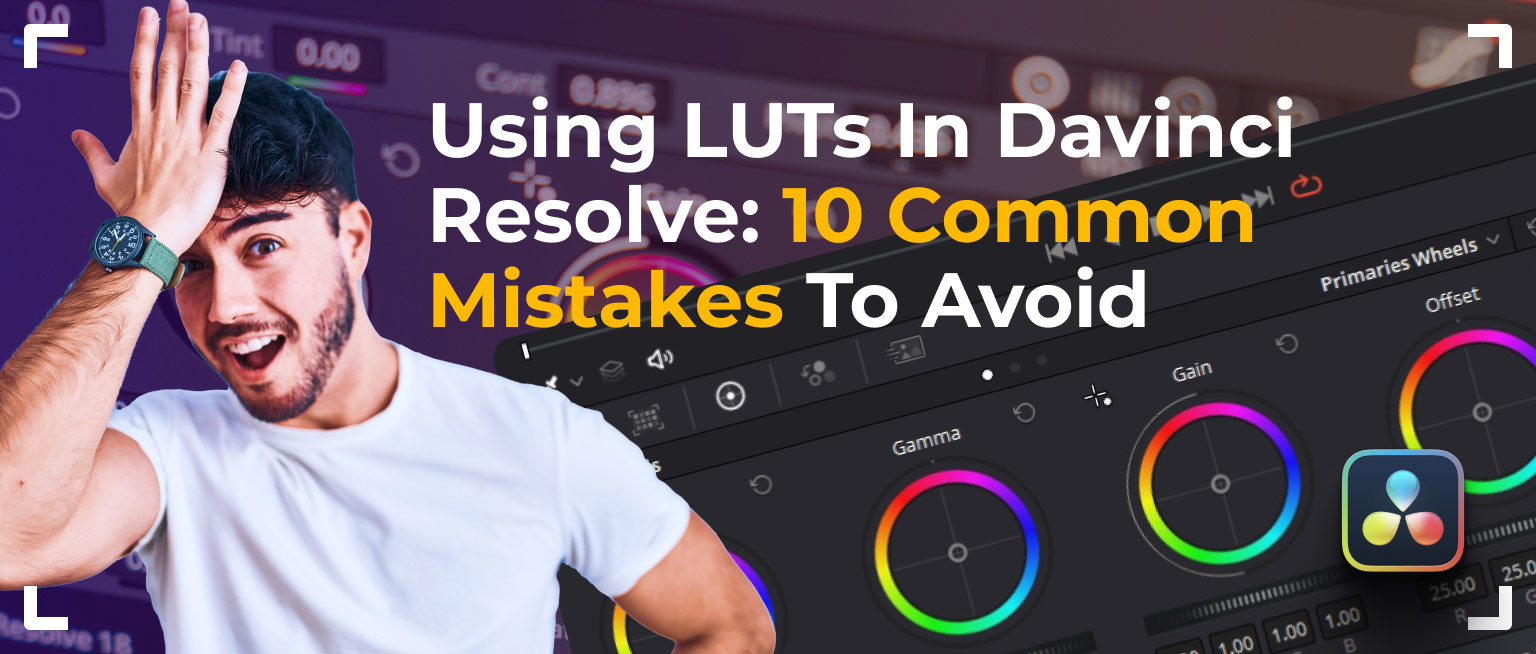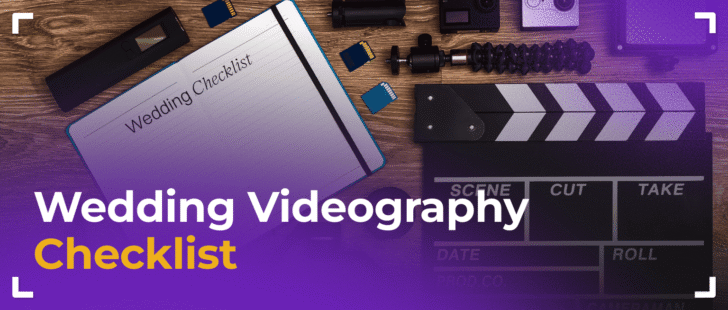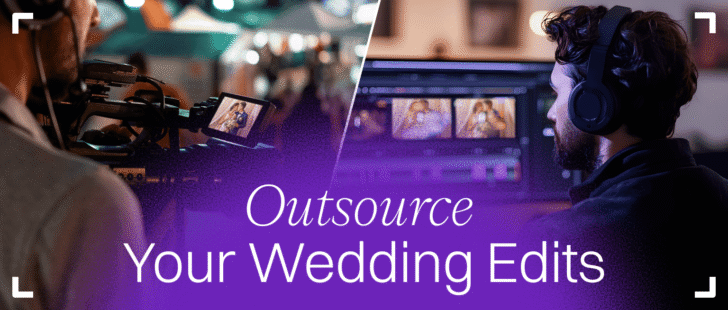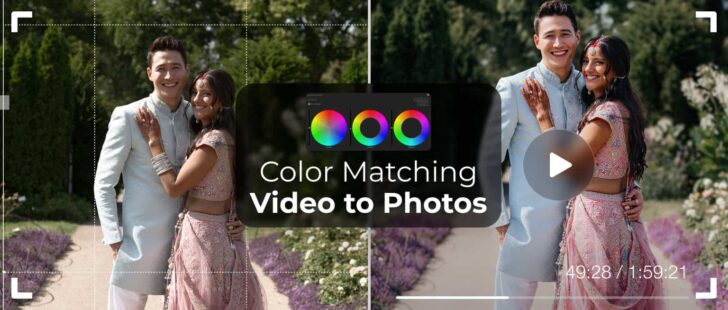Do you employ LUTs in DaVinci but occasionally fail to achieve the desired result? Today, we’ll explore common mistakes videographers make with LUTs and show you how to avoid them, so you can create stunning visuals every time. Get ready to take your color grading skills to the next level!
Top 10 Mistakes when applying LUTs in video editing
- Incorrect LUT choice
One of the most common errors is using a LUT that isn’t meant for your original footage. For instance, applying a LUT designed for S-Log3 to material shot in Rec.709 can distort colors.
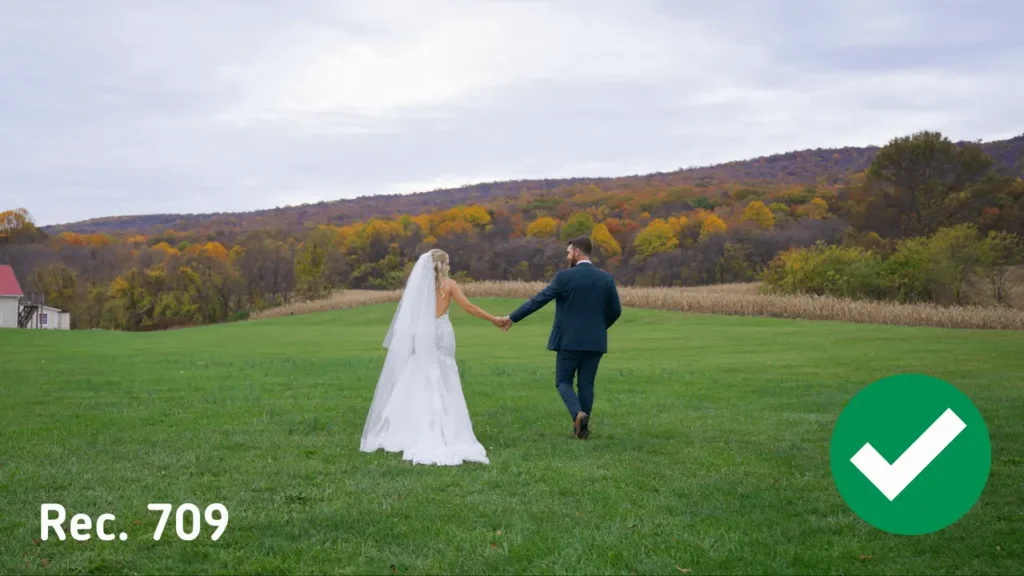
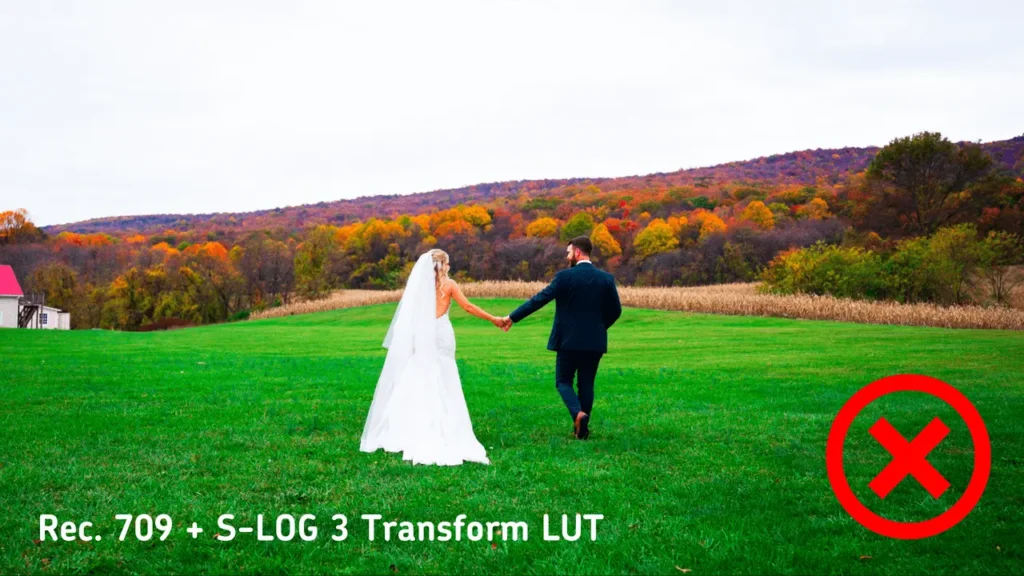
- Working with LUTs without using Scopes
Scopes are visualization tools that assist video engineers and colorists analyze color and brightness information within video footage. They offer essential data that cannot be solely assessed visually and are utilized to achieve technically precise and visually coherent color correction.
The main types of Scopes in DaVinci Resolve:
- Waveform – shows the image brightness along the horizontal axis of the video.
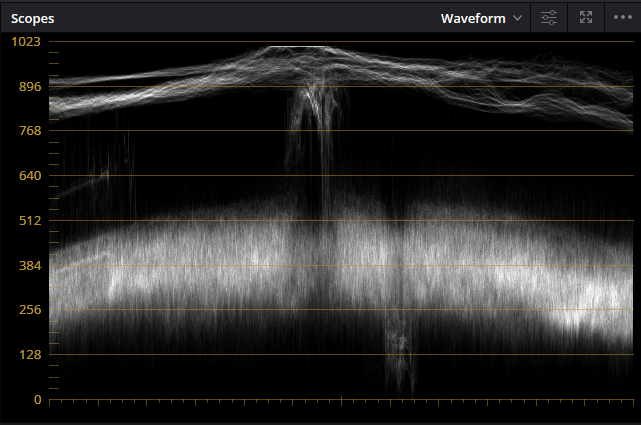
- RGB Parade shows the levels of red, green, and blue colors individually, enabling you to spot color imbalance and make adjustments accordingly.
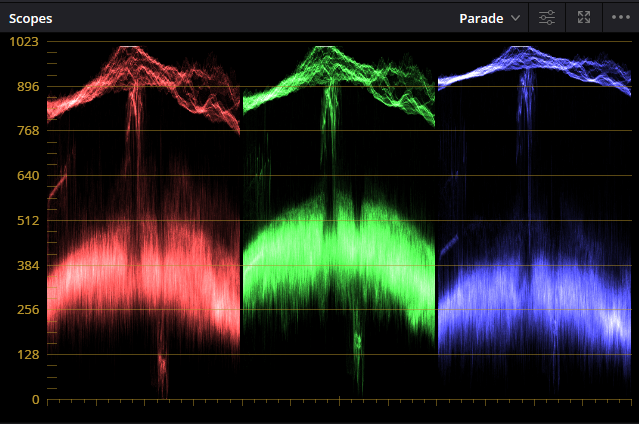
- Vectorscope – this tool depicts the saturation and hue of colors in the video. It illustrates color distribution in a circular manner, where the angle denotes the hue, and the distance from the center represents the saturation.
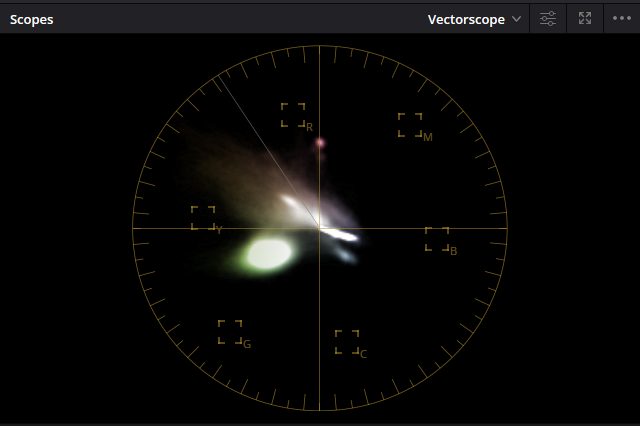
- Histogram – shows the distribution of brightness or color components throughout the entire image. This allows you to see how well the image is exposed and where potential loss of details may occur in the shadows or highlights.

- CIE Chromaticity Diagram, or CIE color chart, is a visual representation of colors that the human eye can perceive. It’s grounded in color vision theory and was devised by the International Commission on Illumination (CIE) in 1931. This diagram showcases the color gamut that can be replicated in a two-dimensional space, with the axes representing chromaticity coordinates x and y.In the realm of color correction within DaVinci Resolve and other color grading systems, the CIE Chromaticity Diagram serves as a tool for scrutinizing the color space and hues within an image. This aids in understanding how different colors are spread across the visible spectrum and how they’ll appear on various output devices. Additionally, the CIE diagram denotes specific zones representing standard color spaces like sRGB, Adobe RGB, DCI-P3, and Rec. 2020. This allows colorists to ensure their work meets the necessary standards.
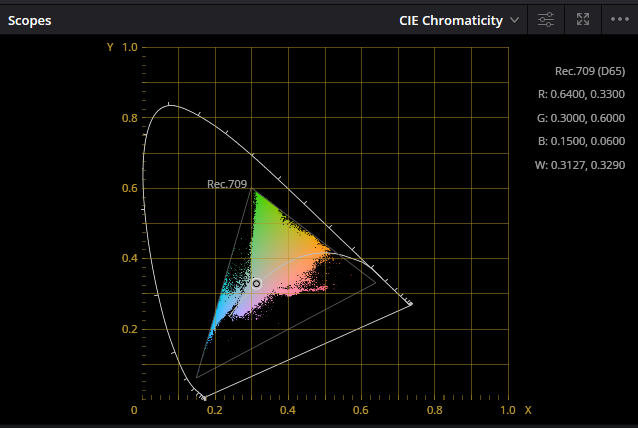
By employing these tools, a colorist can meticulously fine-tune color balances, contrast, saturation, and other image parameters, ensuring there are no overexposed or excessively dark areas. Moreover, they verify that color rendition complies with technical standards and the creative intent of the project. Scopes are invaluable when handling log material, necessitating precise color correction to restore colors and contrast to standard levels.
- Excessive reliance on LUTs
Some editors depend solely on LUTs for color correction, neglecting the need for additional adjustments and tweaks for each unique clip. For example, adding vignettes, locally adjusting the color of elements within the shot, and fine-tuning local exposure in different parts of the shot. These three actions were demonstrated in the example below. In the second clip, you can observe the addition of a vignette, warmer tones and increased brightness with saturation applied to the clouds, and adjustments made to the brightness and saturation for the foreground forest.
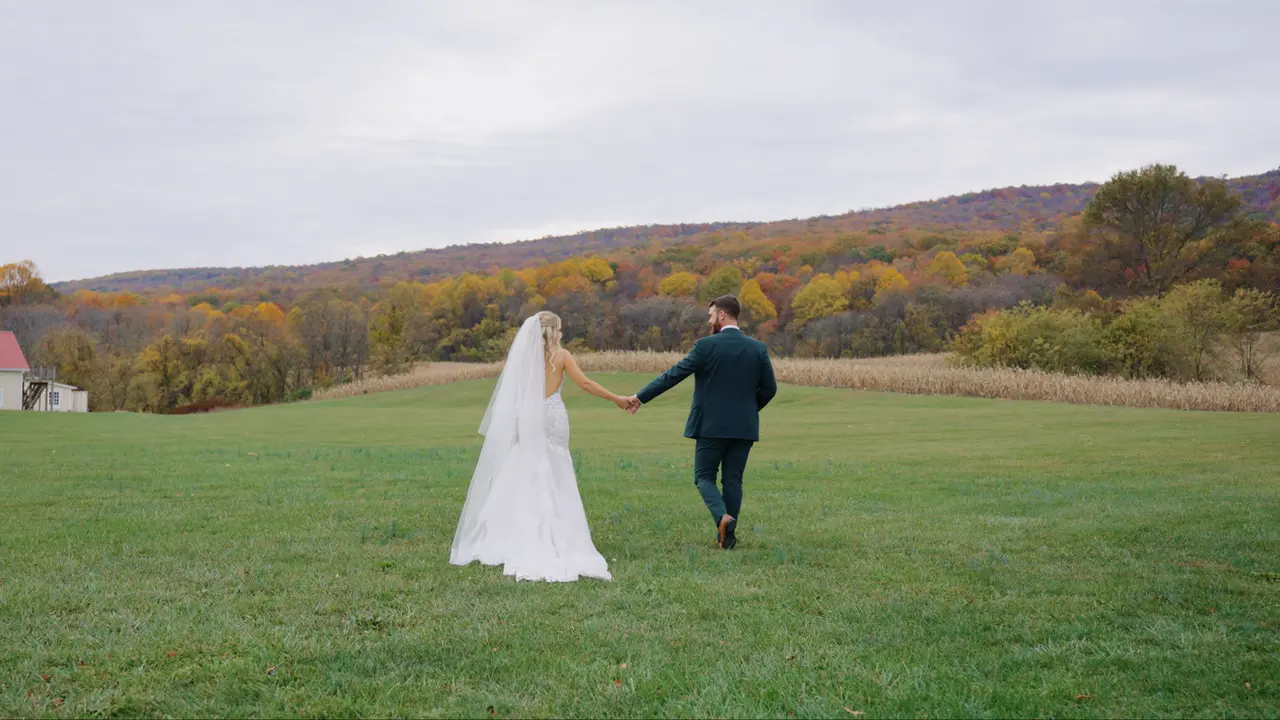
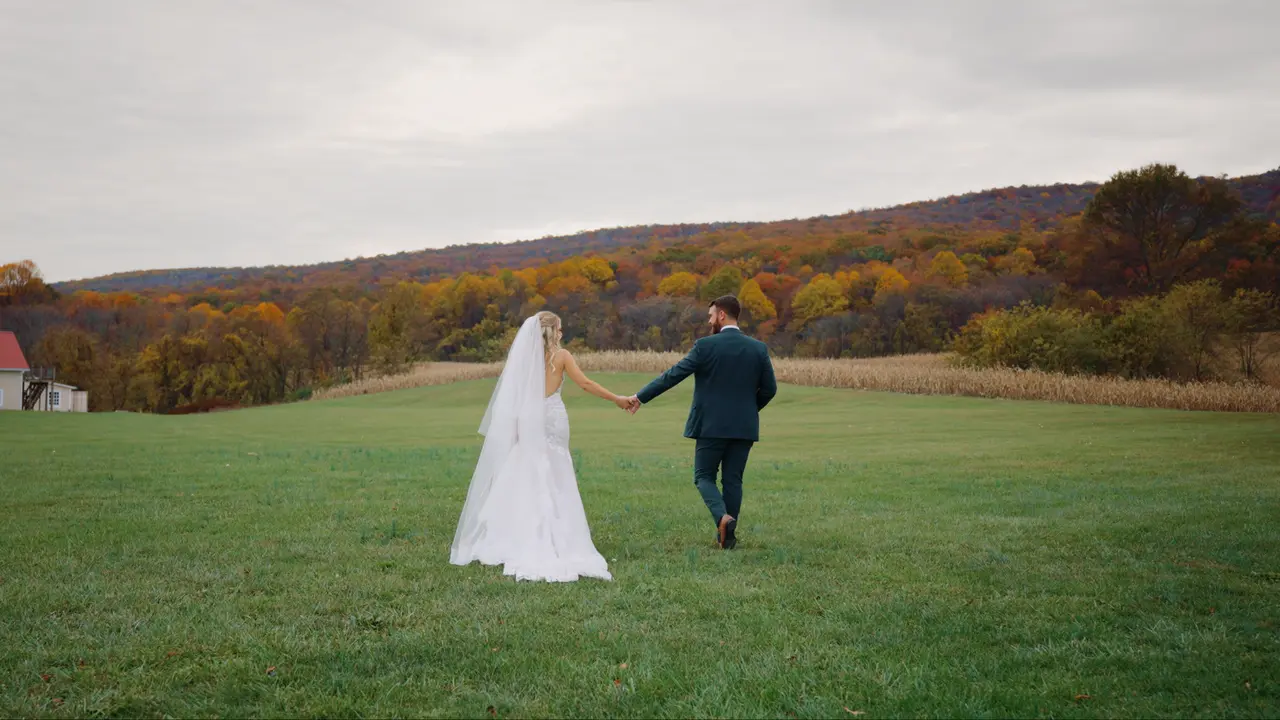
- Using LUTs for scenes with vibrant lighting fixtures
When we’re shooting evening wedding scenes with lighting fixtures, it’s not always effective to apply the same LUT across all the footage. For example, in a dance floor setting with numerous colorful elements like lighting fixtures, the impact of the LUT might either go unnoticed by viewers or affect the saturation of the lighting fixtures and overall color composition. To maintain picture quality, it’s advisable to opt for a different LUT that doesn’t alter color saturation or to forego using one altogether. Below, you’ll find an example showing color grading with and without the Timbre 05 LUT. You’ll notice that while the Timbre 05 LUT adds a touch of contrast to the shot, it also enhances the saturation of skin tones and eliminates the blue tint from the lighting fixtures on the dance floor. Adjusting skin tone saturation and contrast manually can be done without relying on the Timbre 05 LUT.
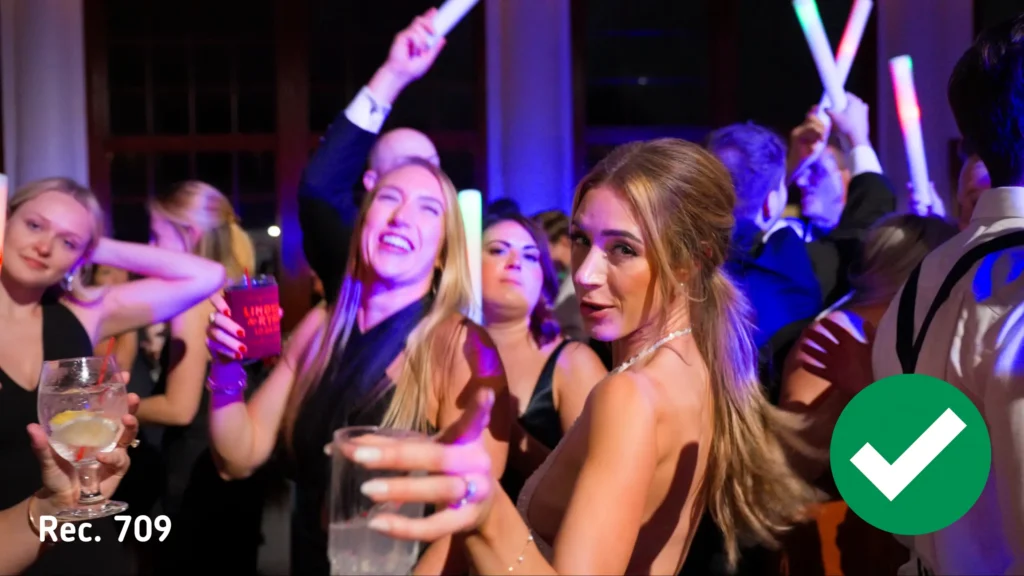
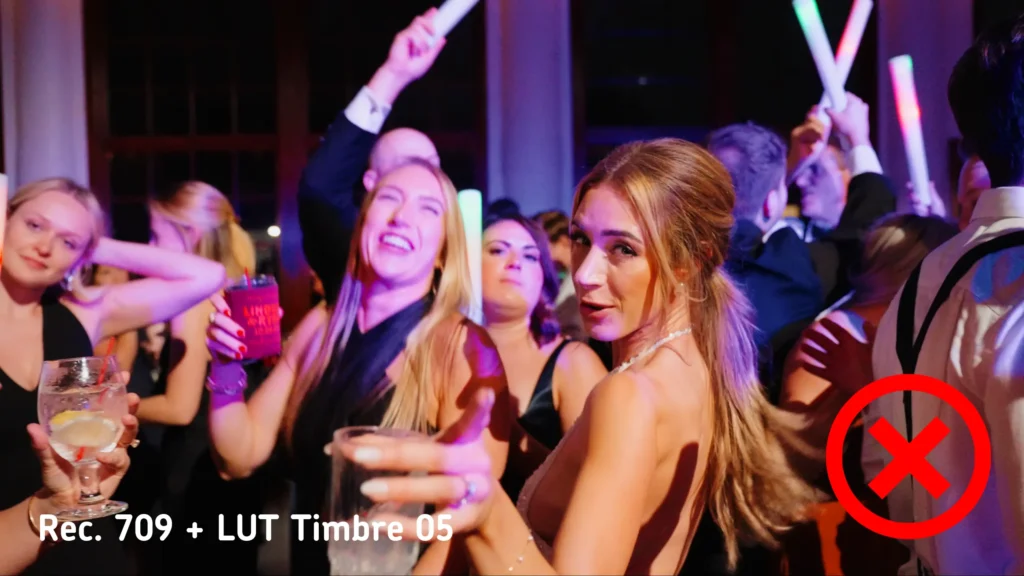
- Incorrect node sequence
In DaVinci Resolve, the order of nodes in the processing chain matters. Applying a LUT before adjusting exposure or white balance can cause distortions. Typically, LUT application occurs at the end of the processing chain, following the Color Space Transform to Rec.709, or occasionally before it, as specified in the usage instructions.
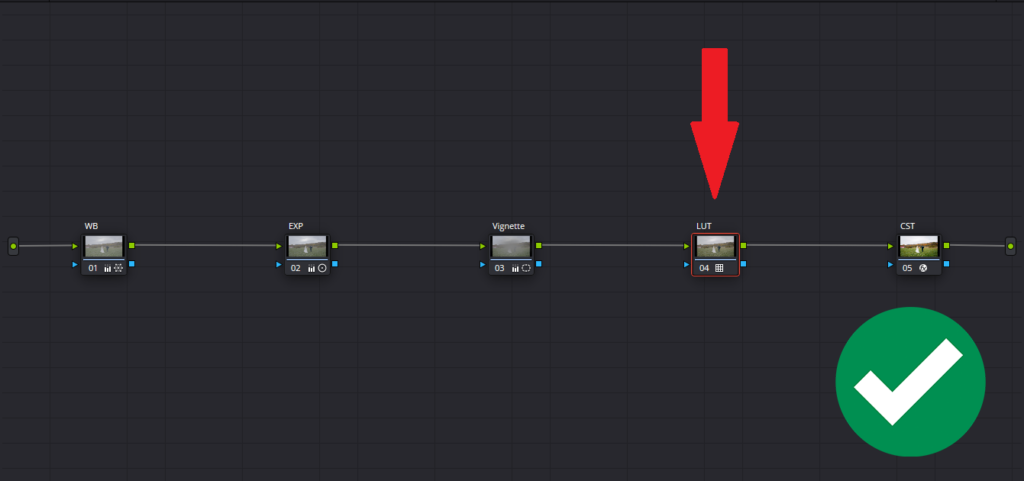
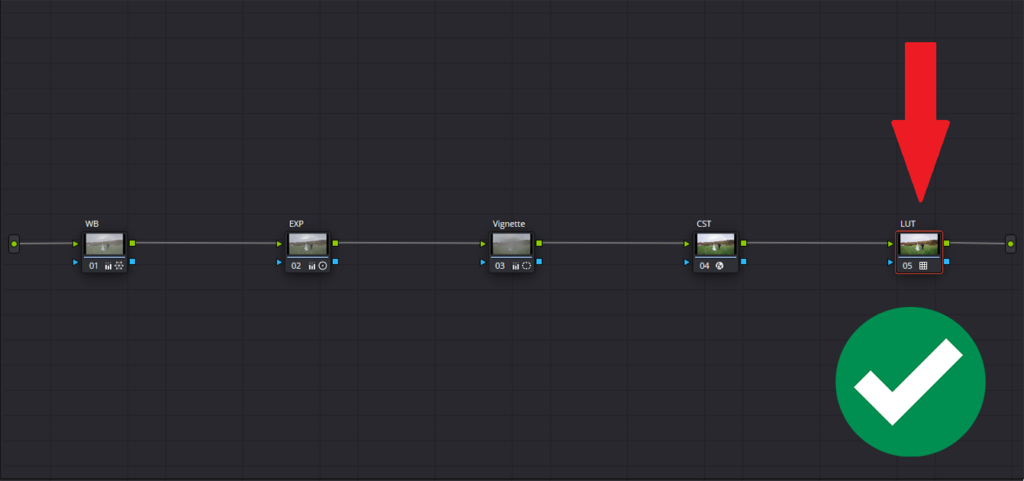
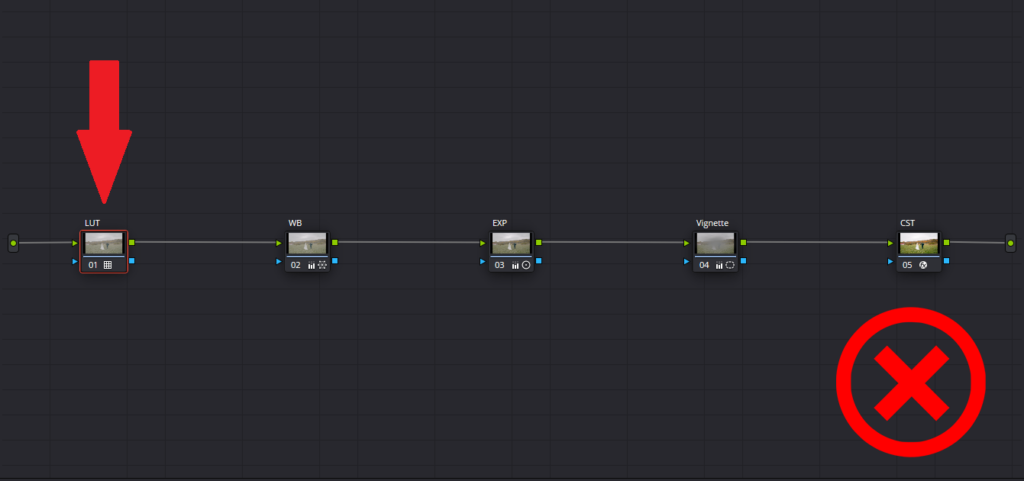
- Overuse of LUTs
Some LUTs create a highly stylized effect. While this may seem attractive initially, excessive application can make the image appear unnatural and lose details in the shadows or highlights. In such cases, you can either substitute the LUT or adjust the intensity of the current one. In the example below, at 100% intensity, the LUT yields an excessively dark image, causing details in the groom’s jacket to vanish. To address this, the LUT intensity was reduced to 30% from 100%.
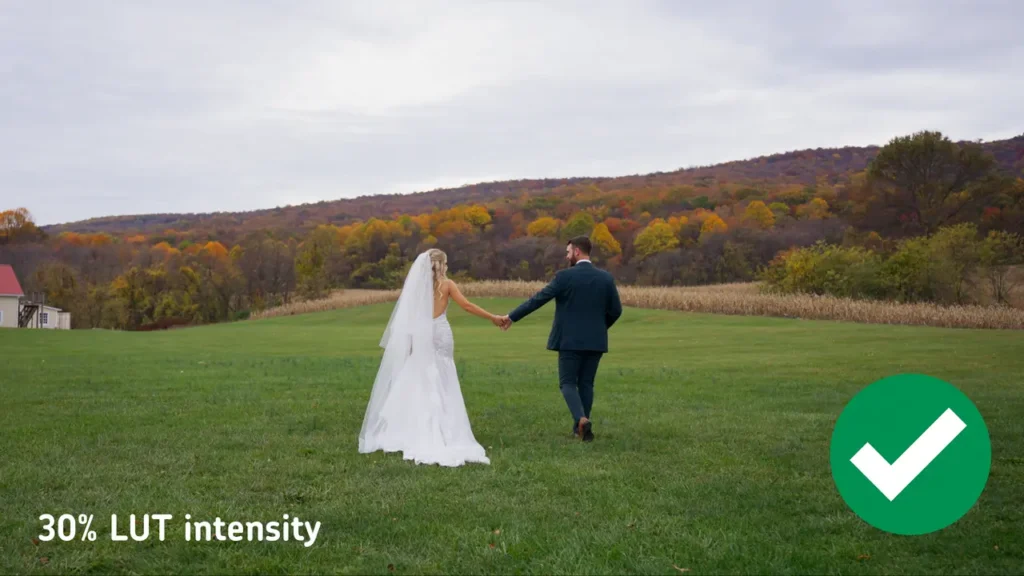
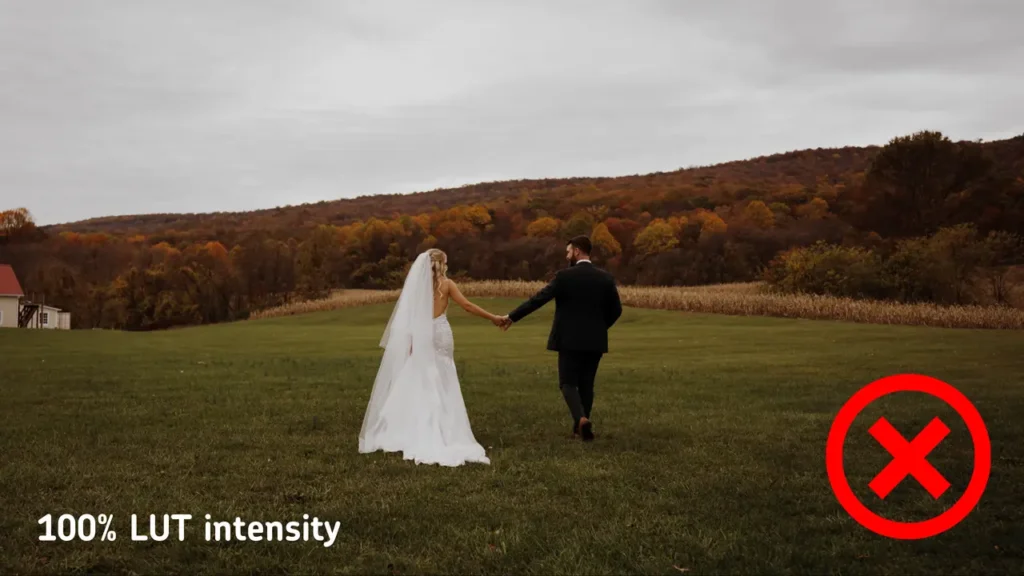
- Improper LUT combination
Using two or more LUTs with different Looks leads to a negative color representation in the clip. For instance, applying a Monochrome look to the shot and then adding an Analog look with a different color would yield less than optimal results.
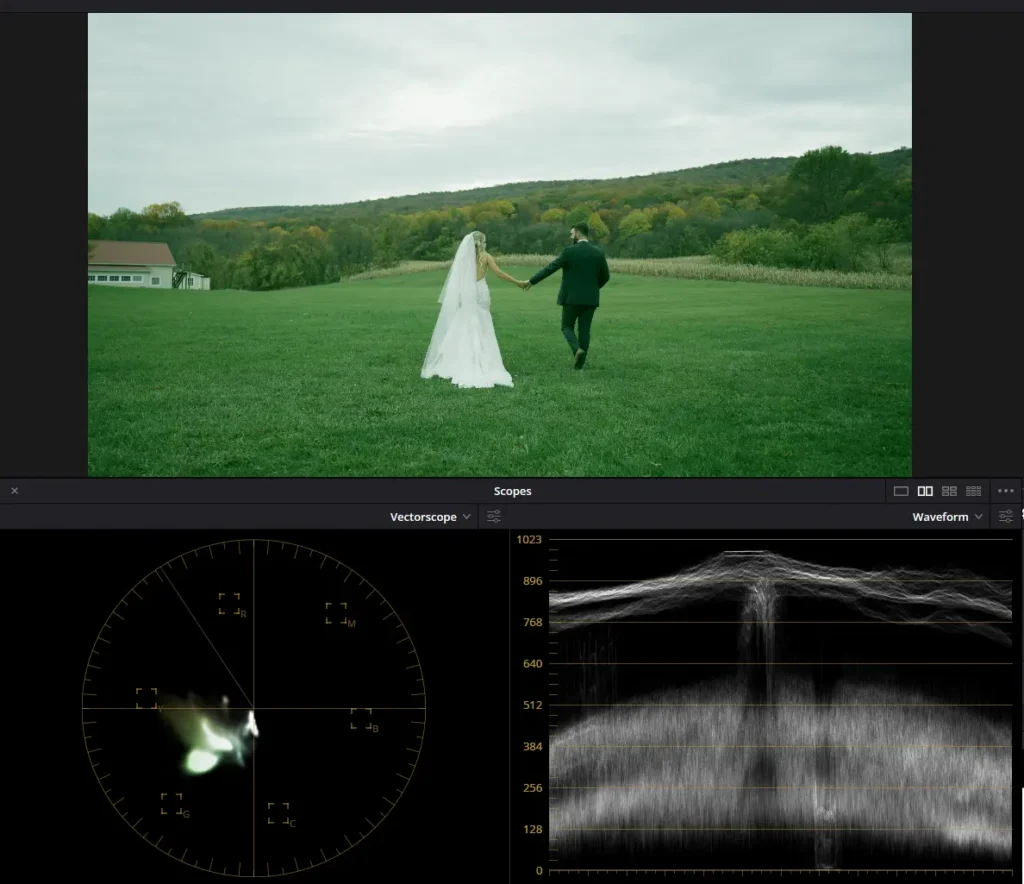
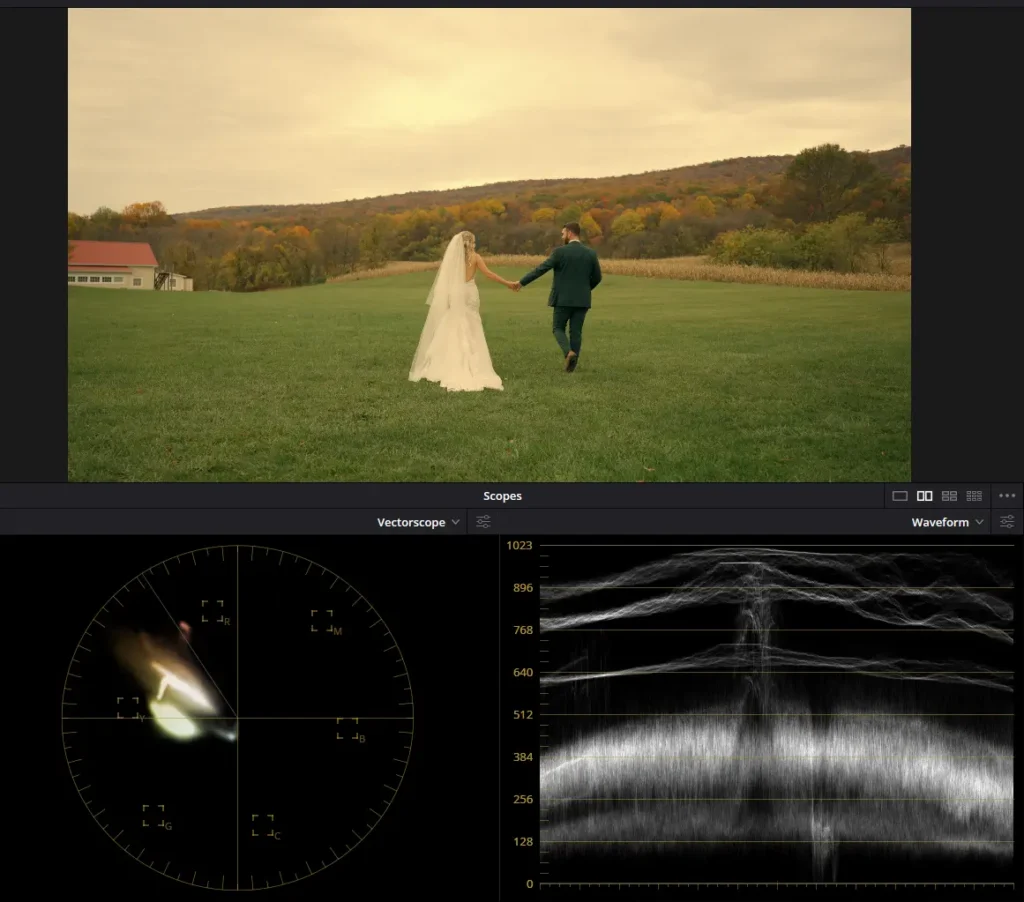
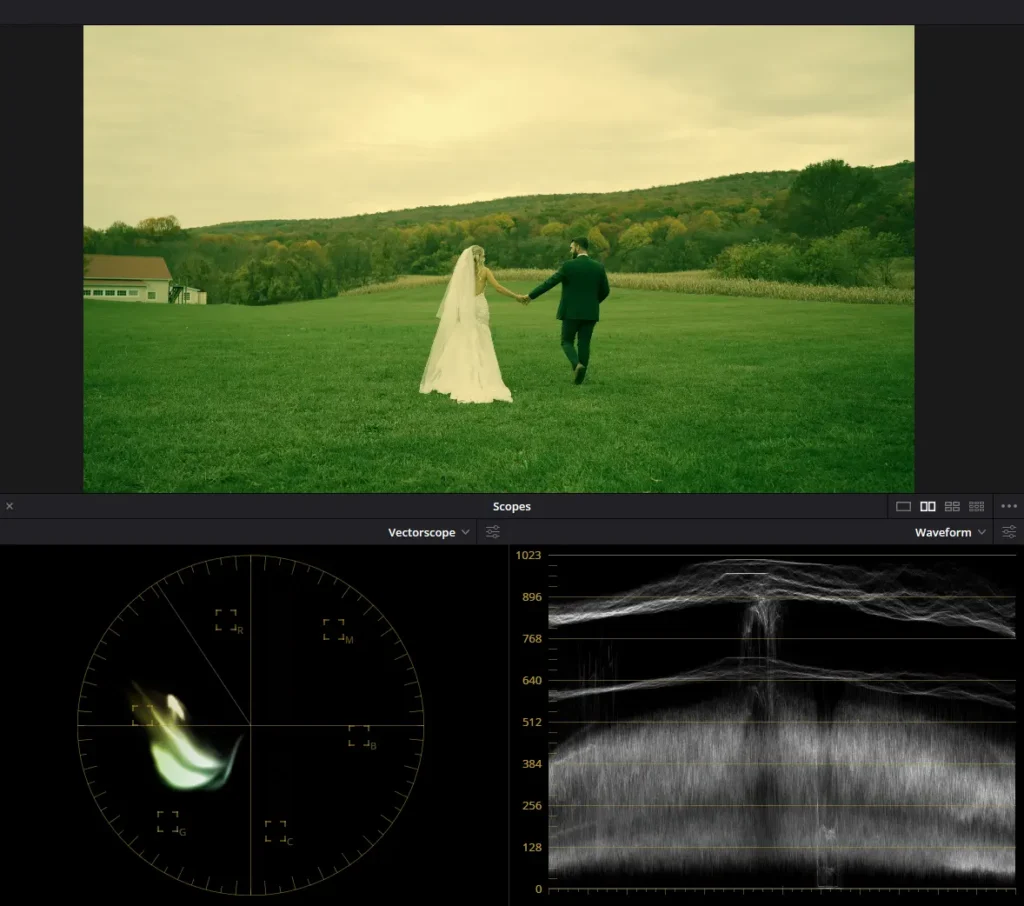
- Failing to check LUTs on different devices
Colors and contrast may differ across various screens. Before making a final decision, test how the LUT appears on different devices to ensure the best outcome.
- Ignoring input and output parameters of LUTs
Some LUTs are crafted with specific input and output specifications. Neglecting these parameters and applying LUTs to unsuitable material can result in unexpected outcomes. It’s crucial to thoroughly review (or watch) the instructions for applying LUTs, which outline their usage specifics.
- Ignoring Screen Specifics
When working on a screen that’s uncalibrated or has skewed color reproduction, editors might make incorrect color correction decisions based on its appearance. Before buying a monitor or laptop for a filmmaker or editor, it’s crucial to consider the display specifications and its intended use. Gaming laptops and monitors typically don’t meet color correction standards as they lack 100% sRGB, Adobe RGB, DCI-P3, and may exhibit color display flaws. Monitors certified for color correction typically bear CalMAN certification (developed by Portrait Displays Inc.) or certification from other entities like Pantone (BenQ), EBU (European Broadcasting Union), SMPTE (Society of Motion Picture and Television Engineers). Examples include monitors like Asus ProArt, BenQ, etc., which come with factory calibration.
Calibration is the process of adjusting monitor settings to meet color reproduction standards, while profiling involves creating a color profile that fine-tunes the colors output by the operating system to match the monitor’s characteristics.
When discussing monitor calibration, it’s recommended to do it every 6 months or more frequently, depending on the manufacturer’s instructions and factors like how often the monitor is used and environmental conditions such as lighting. Special devices are used for this purpose. They allow you to calibrate the monitor yourself (such as Datacolor or X-Rite calibrators, among others), or you can seek assistance from a specialized center where professionals can help you calibrate. These centers have expensive specialized equipment with reference monitors.
Conclusion
Mastering the art of using LUTs in DaVinci Resolve can make your wedding films look truly cinematic. We hope our recommendations will help you get the desired results.
Are you a wedding videographer looking to elevate your editing game? Let us help you bring your vision to life! Contact us today to learn more about our wedding video editing services and how we can collaborate to create unforgettable moments for your clients.
